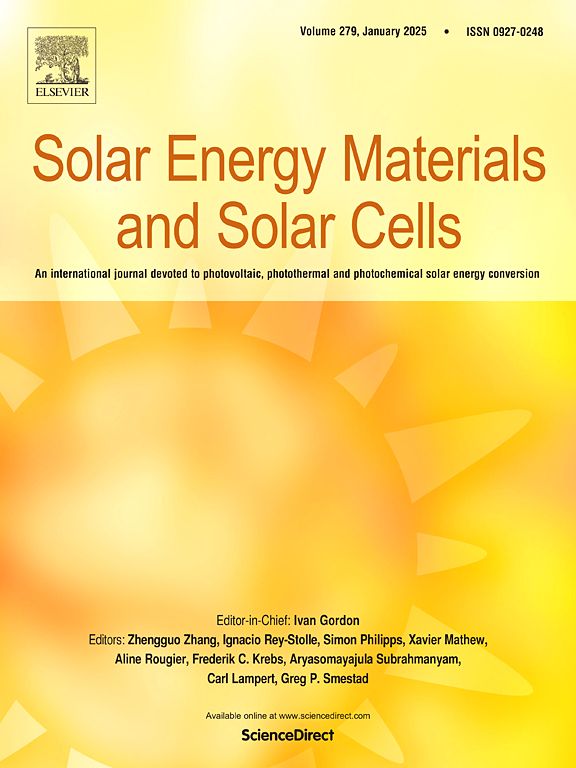Method of contact resistivity measurements at typical operating conditions for silicon heterojunction solar cells
IF 6.3
2区 材料科学
Q2 ENERGY & FUELS
引用次数: 0
Abstract
The electron-hole contact resistivity measurement can be used to quantify and understand the transport mechanisms at the interfaces of a solar cell. In the silicon heterojunction solar cell technology, it has been shown that the electron and hole contact resistivities exhibit temperature and illumination dependences. The dependence on illumination is related to the variation in the charge carriers concentration at the interfaces after photogeneration in crystalline silicon (c-Si) absorber. Typically, contact resistivity is determined by using the Transfer Length Method (TLM) in dark conditions, but it is not representative of typical solar cell operating conditions. In this study, we propose a method to accurately determine the temperature and injection level of excess charge carriers in TLM samples under illumination. We have established a procedure to correlate the passivation level of the TLM samples with the conductivity of the c-Si absorber. This method highlighted two conductivity regimes within the electron-hole contact as a function of the injection level, with the low injection levels leading to an increase in the contact resistivity. For example, a hole contact resistivity value of up to 800 mΩ cm2 was obtained for the lowest injection levels at 300 K. The contact resistivity values determined at the Maximum Power Point (MPP) were used to model the series resistance, which was compared with the experimental values. The simulated results for the series resistance exhibited a clear trend with the temperature similar to the experimental results.
求助全文
约1分钟内获得全文
求助全文
来源期刊

Solar Energy Materials and Solar Cells
工程技术-材料科学:综合
CiteScore
12.60
自引率
11.60%
发文量
513
审稿时长
47 days
期刊介绍:
Solar Energy Materials & Solar Cells is intended as a vehicle for the dissemination of research results on materials science and technology related to photovoltaic, photothermal and photoelectrochemical solar energy conversion. Materials science is taken in the broadest possible sense and encompasses physics, chemistry, optics, materials fabrication and analysis for all types of materials.
 求助内容:
求助内容: 应助结果提醒方式:
应助结果提醒方式:


